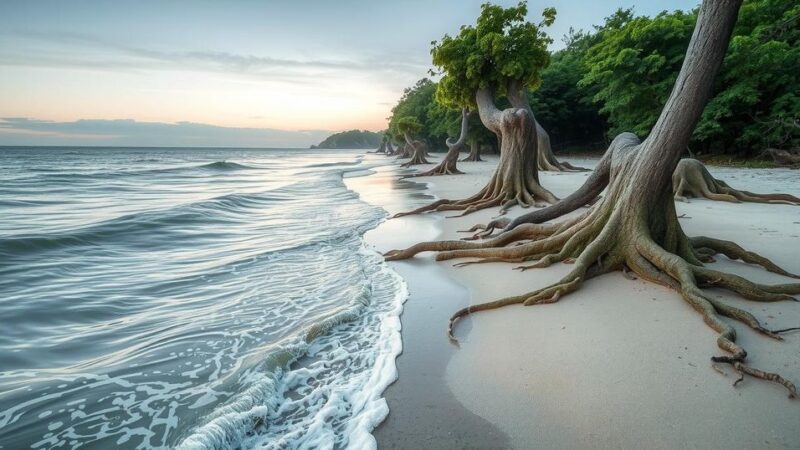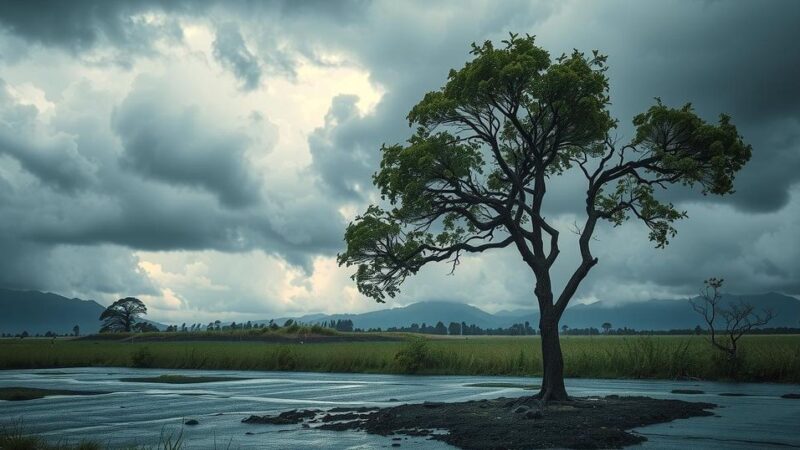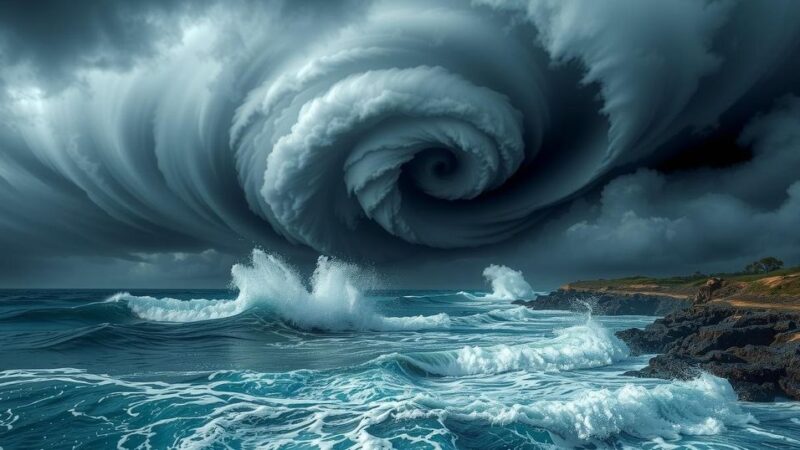A study indicates that a unique bloom of marine phytoplankton near Madagascar is linked to drought conditions in Southern Africa. Dust from the drought deposited iron-rich particles into the ocean, creating optimal conditions for phytoplankton growth. This situation may recur as climate change progresses, with the potential for phytoplankton to sequester atmospheric carbon dioxide.
Recent research has established a connection between an unprecedented bloom of marine phytoplankton off the coast of Madagascar and drought conditions in Southern Africa. This phenomenon is attributed to the aggravation of climate change, which has intensified droughts globally. As vegetation suffers due to insufficient moisture, wind can easily lift exposed soil particles, enabling them to travel vast distances. These dust particles, when deposited into marine environments, can serve as fertilizers. The investigation led by Dionysios Raitsos and colleagues focused on a specific event between November 2019 and February 2020, during which dust from drought-impacted Southern Africa prompted a significant phytoplankton bloom in the southeastern Madagascar region. The research team employed data from the Copernicus Atmosphere Monitoring Service (CAMS) to analyze standardized anomalies of dust aerosol optical depth, alongside in situ measurements from an Aerosol Robotic Network (AERONET) station. They discovered that the dust aerosol optical depth anomalies during the bloom period were the most substantial recorded over the 17 years of CAMS’s data collection. Notably, this dust cloud coincided with heavy rainfall events that facilitated the deposition of iron-rich dust particles into the ocean, consequently creating favorable conditions for phytoplankton proliferation. Raitsos and his team identified multiple potential origins for these iron-rich dust aerosols, which emerged from Southern Africa between 2012 and 2020 and were associated with elevated temperatures and persistent drought. The researchers conclude that as climate change continues to progress, one can anticipate additional phytoplankton blooms stemming from similar mechanisms, which may contribute to the removal of carbon dioxide from atmospheric levels.
The interaction between climate change and environmental dynamics has significant implications for ecological balances. One notable factor is the impact of drought, which can lead to the degradation of vegetation cover. Consequently, the loose soil is susceptible to erosion and transport by wind, resulting in long-range dust dispersal. This dust can affect various ecosystems, particularly marine ecosystems, by introducing essential nutrients, such as iron, which are critical for phytoplankton growth.
In summary, the study illustrates a significant relationship between drought in Southern Africa and an exceptional phytoplankton bloom off the Madagascar coast, underscoring the complex interplay between climate change and marine ecology. The research highlights the potential for these blooms to sequester carbon dioxide, suggesting vital implications for future climate dynamics as global temperatures continue to rise.
Original Source: www.eurekalert.org







